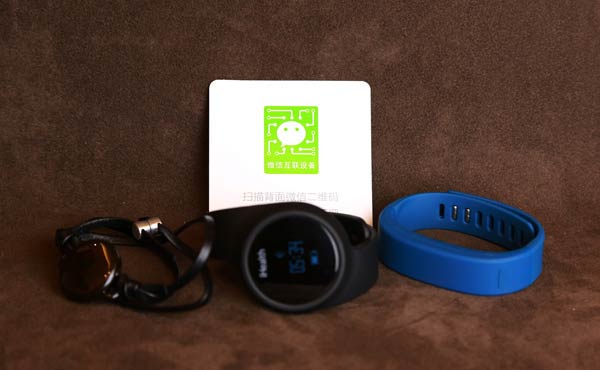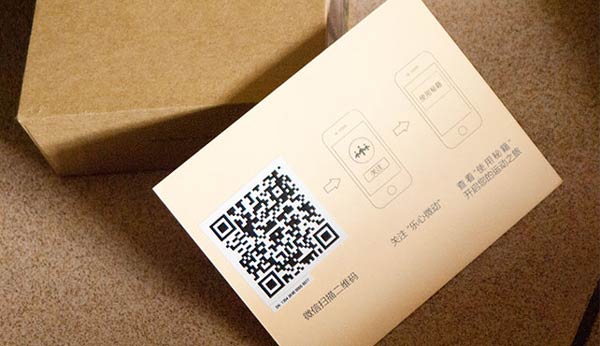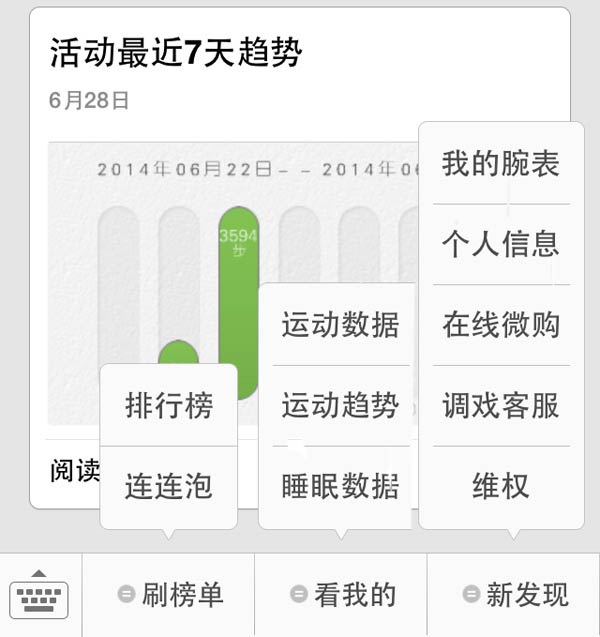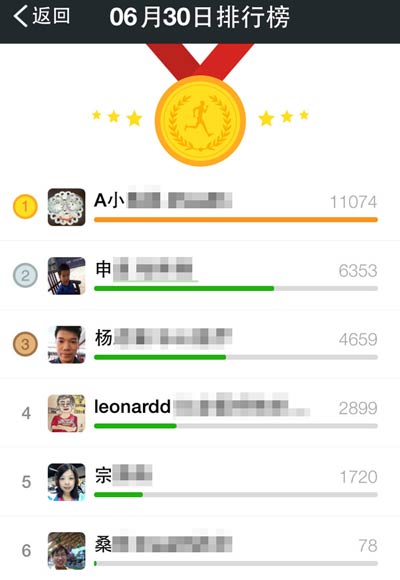
Recently, one of China’s famous Wemedia Newhard learned from various channels that Wechat has been officially involved in the smart hardware market.
The way it adopts is not launching smart hardware products, but that Tencent uses Wechat official account for the entrance of smart hardware. In addition, it has the ambition of platformization of smart hardwear.
The move was initiated by Wechat. It approached smart hardware manufacturers, and has chosen four companies to work with. Wechat could become the aggregation center of smart hardware. At the moment Wechat is to use Wechat official service account as the access point of smart bracelet/watch and other sports trackers to completely replace the original mobile apps.
In addition to providing access platform, Wechat will provide sales channel traffic from Jingdong. Wechat asks for two mandatory requirements: first, join user data ranking; second, integrate with Wechat Complaint and Rights Protection Center.
What is the specific logic of smart hardware’s access to Wechat? What is its influence on the relatively confusing smart hardware market now? Newhard talked to a few hardware manufacturers and provided answers:
What hardware are welcome on Wechat?
The first representatives are sports bracelet, watch and other products. iHealth that started earlier but its accomplishments are easily known outside its field is one of the representative manufacturers and will access to Wechat with its smart watch product AM3. The manufacturers of smart hardware integrating with Wechat include sports bracelet products from Lifesense, Huawei and Codoon.
In fact, the main products of these manufactures are not all sports bracelets. The main products of iHealth are smart medical products such as blood pressure meters; the well known products of Lifesense are smart weighing machines; Huawei is a “newcomer” of bracelet products; only Codoon started producing bracelets earlier.
A responsible person in iHealth said that their contact with Wechat has already begun at the end of 2013. At the beginning, iHealth wanted to integrate blood pressure meters with Wechat. But, Wechat preferred to more mature products with broader target consumers. Eventually, they decided to use products of sports bracelets.
Lifesense developed BonBon in two months in response to Wechat’s hardware strategy.
How to Integrate Hardware with Wechat?
Currently, the approach taken by Wechat is to use Wechat service account as access port to to retrieve and manage smart hardware data.

The specific method is that each device will be equipped with a two-dimensional code card. Users can complete following manufacturers’ Wechat service accounts and pairing with bracelets simply by using Wechat to scan the 2D code; Wechat will connect with the device through Bluetooth on mobile phone.
Then, users can view their daily sport and sleep data through menu of the Wechat service account.

Mandatory Requirements of Wechat Hardware Connection
Currently, Wechat has two mandatory requirements on devices connecting to Wechat:
- Must join user data ranking program. In the ranking, you can see the data ranking of your friends who access to sports bracelets of Wechat. That is, if your friends are also using a particular product of these four manufacturers, the data will appear in the same ranking.When the pedometer data errors of bracelets from different manufacturers are not the same, will the ranking make sense? There is no better solutions yet
- Another mandatory requirement is to add the function of “rights protection”, that is, if users are dissatisfied with the products, they can bypass the manufacturer and complain directly to Wechat.

Highlights of Wechat Smart Hardware Strategy
The above points are enough to see the special way for Wechat to get involvement in smart hardware.
- Customer service system: The function menu of the service account of smart hardware enterprises directly integrates multiple customer service functions, so that it become very simple for enterprises to deploy customer service staff with lower cost.
- Direct purchase through Wechat: through a menu called “online Wechat purchase”, users can go directly to the purchase page of products. This page is connected with Jingdong Mall and Wechat wallet, resulting in very simple purchase process.
- Finally, a very important point is that this page can be shared quickly like ordinary Wechat articles. In the mature Wechat social circle, this advantage is a potential driving force for the sales of a product.
Obviously, the ultimate goal of Wechat’s access to smart hardware is trying to develop Wechat into an open platform of smart hardware. The products of this time are sports bracelets. And, the access and integration of smart weighing machines, cameras, smart meters, smart routing and even smart home products could be a matter of time.
Main Features & Cons
From the initial experience of using iHealth AM3 and Lifesense BonBon bracelets and other products, these products have obtained relatively complete application through Wechat service account. You can check your sport, sleep data and sport trends. Meanwhile, manufacturers can design some personalized functions.
Now the functions are relatively simple, such as viewing historical sport data. But continuous checking is not allowed and the user experience are not as good as original apps.
Based on the current strong user stickiness of Wechat, Wevhat’s move in smart bracelets is just the beginning.
Source: Sohu IT Guoren, Newhard